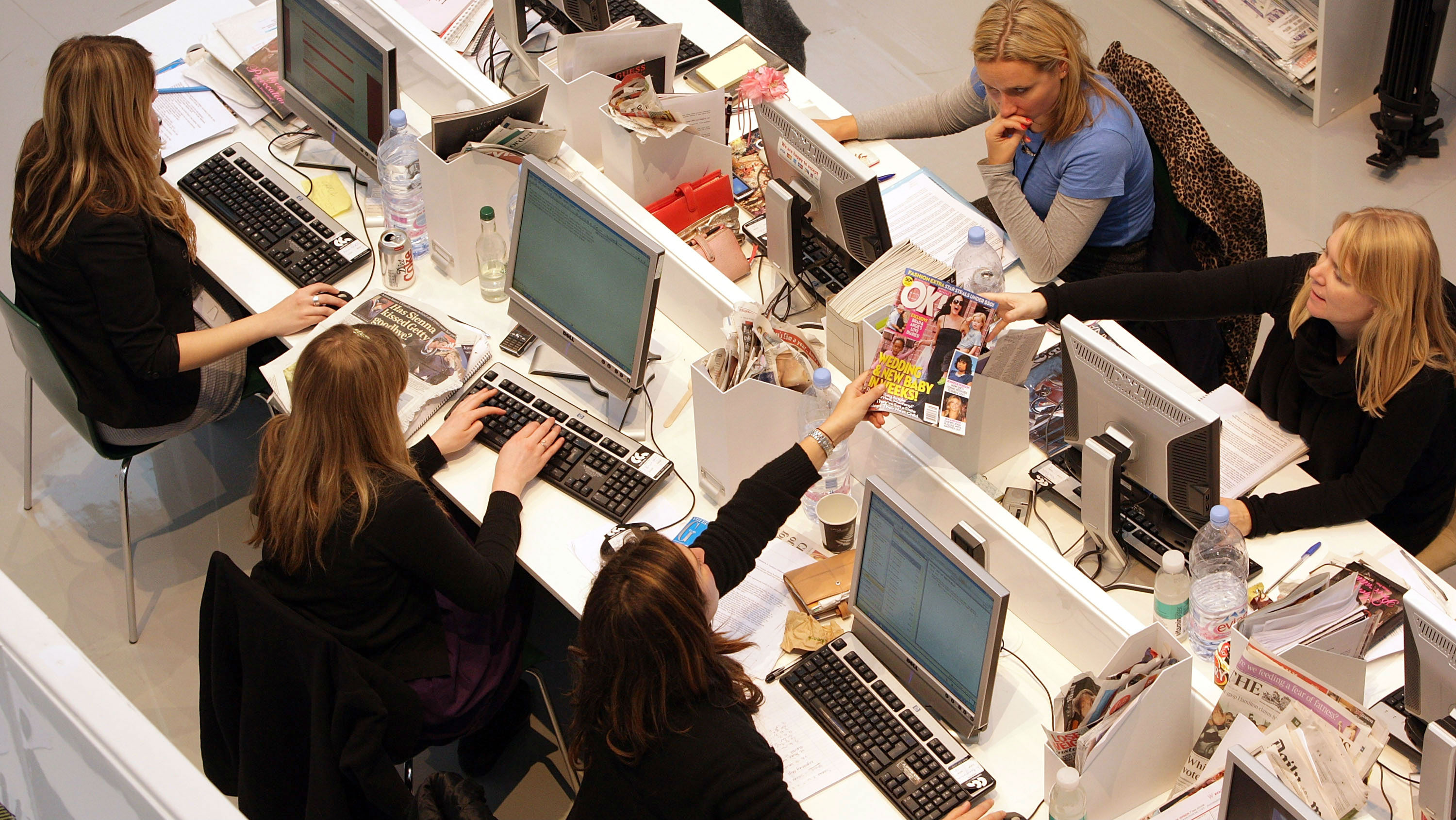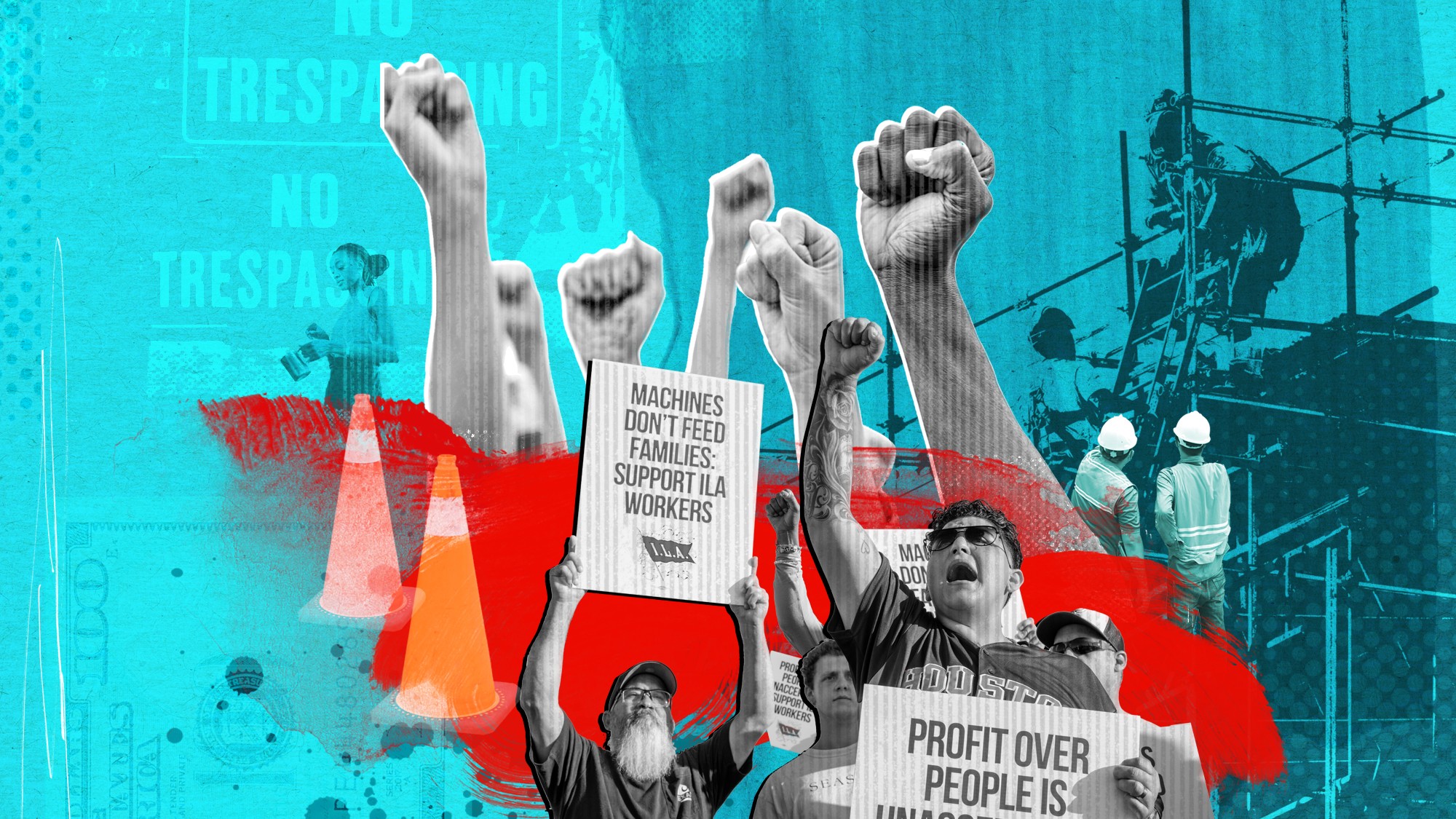Pros and cons of hybrid working
According to the latest data Tuesday to Thursday is the new working week in the City of London

When working-from-home guidance was lifted at the beginning of last year it heralded the start of “The Great Return” to the office for millions of employees across the UK.
Yet a study of mobile phone activity has found that this anticipated return to city centre workplaces has not yet fully materialised, with many people spending significantly more time in suburbs and small towns.
Analysts Placemake.io and Visitor Insights found that anonymised phone data from more than 500 UK high streets from 2019 to 2022 showed that while city centres have seen a decline, many towns and suburbs have seen an increase in high street footfall. Researchers said the data could be directly linked to the ongoing trend for working from home.
The Week
Escape your echo chamber. Get the facts behind the news, plus analysis from multiple perspectives.

Sign up for The Week's Free Newsletters
From our morning news briefing to a weekly Good News Newsletter, get the best of The Week delivered directly to your inbox.
From our morning news briefing to a weekly Good News Newsletter, get the best of The Week delivered directly to your inbox.
Mark Allan, chief executive of property firm LandSec, told the BBC that the findings chimed with the way offices are currently being used in central London. According to Allan, Tuesdays to Thursdays are incredibly busy in the City of London, but activity on Mondays is only 50-60% of that level, and Fridays are almost as quiet as weekends.
“We’re not going back to how things were pre-Covid,” he said. “We certainly believe there are going to be fewer people in offices for the longer term and we are planning accordingly.”
Workspace provider IWG has seen a similar spike in people using its desks in suburban locations, with people most likely to use its spaces on Tuesdays and Wednesdays, The Guardian reported.
Covid-19 has “changed the way we work” – and the future of work is “hybrid”, said Alanah Mitchell on The Conversation. Spending part of the week at home and the rest at the office is going to be the norm for many employees. Here we look at the pros and cons of the hybrid working model.
A free daily email with the biggest news stories of the day – and the best features from TheWeek.com
1. Pro: greater flexibility
Hybrid operating models are being adopted at an “unprecedented rate”, said Rajiv Sodhi on BusinessToday. No two hybrid work structures are the same and a “new relationship” between the employer and the employee is emerging – “it’s a new social contract”.
Every organisation is coming up with a unique approach to meet its workers’ needs and there’s “model flexibility at all levels”, Sodhi added. Employees want the best of both worlds and work is “no longer tied to a single address”.
By far, the “best option” for employees and employers alike is a flexible-hybrid model, said Grow Remote’s Jenny Darmody on SiliconRepublic. “Under this model, jobs which can be done remotely are advertised without location, which means the employees can live where they choose.”
UK firms could even begin offering staff a four-day working week, the i news site said. This is because millions of Britons have “developed a preference for flexible working” during the pandemic. Employment law specialist Rebecca Thornley-Gibson, a partner at law firm DMH Stallard, said it’s been the “biggest experiment in flexible working we’ve ever seen”.
2. Con: heavy emotional toll
A part-remote, part-office schedule has been hailed as the future of work, said Alex Christian on the BBC. “Yet in this hybrid set-up, some employees have never been so tired.” Some workers were excited about having “the best of both worlds”, but anecdotal evidence revealed that the novelty of hybrid work soon gave way to “hassle and a jarring one-day-in, one-day-out routine”.
Emerging data suggests that hybrid working is “emotionally draining”, Christian reported. According to a study by employee engagement platform Tinypulse, more than 80% of leaders said the set-up was exhausting for employees. Workers also reported that a hybrid model was “more emotionally taxing than fully remote arrangements – and, concerningly, even full-time office-based work”.
3. Pro: multiple cost savings
The benefits of a hybrid model adds up, said Guruprasad Srinivasan, COO of Quess Corp, on The Economic Times. “Employees are closer to family, have better physical and mental health, stronger work relationships, improved productivity, choice of location [and] less time to commute to work.” The hybrid model is also “great for diversity and inclusion” as organisations can tap into a wider talent pool.
A study published in November by Virgin Media O2 Business and the Centre for Economics and Business Research (Cebr) found that the positive effects of hybrid working could save the NHS more than £4bn per year. An extra 211 million hours spent caring for family and friends “could be unlocked by flexible working” and this would reduce the burden on the health and social care services, the report said. Physical and mental health benefits of hybrid working could reduce incidence of fatal diseases and reduce pressure on healthcare services.
The study also found that an increase in hybrid working could bring 3.8m people previously unable to work back into the workforce and could boost GDP by £48bn annually as part-time workers increase their working hours.
4. Con: weak staff loyalty
“Employers beware”, hybrid work “weakens loyalty”, said Emma Jacobs in the FT. As hybrid becomes the norm and workers spend less time in the office, their attachment to the organisation may diminish. “If workers spend less time together, their social ties will weaken, as will the attachment to an employer.”
As the workplace culture evolves, companies will “continue to experiment and learn new ways to improve the employee experience”, said Rohini Sachitanand, APAC HR leader at Hewlett Packard Enterprise. Writing on Human Resources Online she added: “While the tactics and techniques will vary, workers will embrace them if they afford them the flexibility and resources to work inclusively and productively. And that may help breed satisfaction and loyalty, two keys to success in a tight labour market.”
5. Pro: regeneration of small towns
More people spending more time away from big city centres has led to increased activity in smaller towns and suburbs. In Kirkby, Merseyside, for example, the study by Placemake.io found that footfall appears to have increased by 160% over three years, aided by the opening of a supermarket in the town centre and other local regeneration efforts.
Town centres recording the biggest increases in activity include Marlow, with a 33% increase, Glossop also on 33%, Matlock on 32% and Colchester and Buxton both on 26%.
6. Con: impact on new joiners and younger workers
Mike Starling is the former digital features editor at The Week. He started his career in 2001 in Gloucestershire as a sports reporter and sub-editor and has held various roles as a writer and editor at news, travel and B2B publications. He has spoken at a number of sports business conferences and also worked as a consultant creating sports travel content for tourism boards. International experience includes spells living and working in Dubai, UAE; Brisbane, Australia; and Beirut, Lebanon.
-
 The pros and cons of globalization
The pros and cons of globalizationPros and Cons Globalization can promote economic prosperity but also be exploitative
-
 The pros and cons of labor unions
The pros and cons of labor unionsPros and Cons Companies throughout the country continue to push for unionization
-
 The pros and cons of a four-day working week
The pros and cons of a four-day working weekPros and Cons Think-tank says shift in working patterns could help alleviate the cost-of-living crisis

